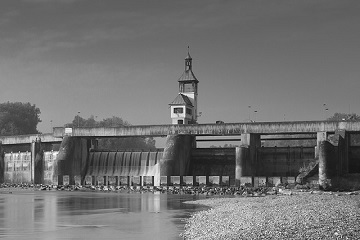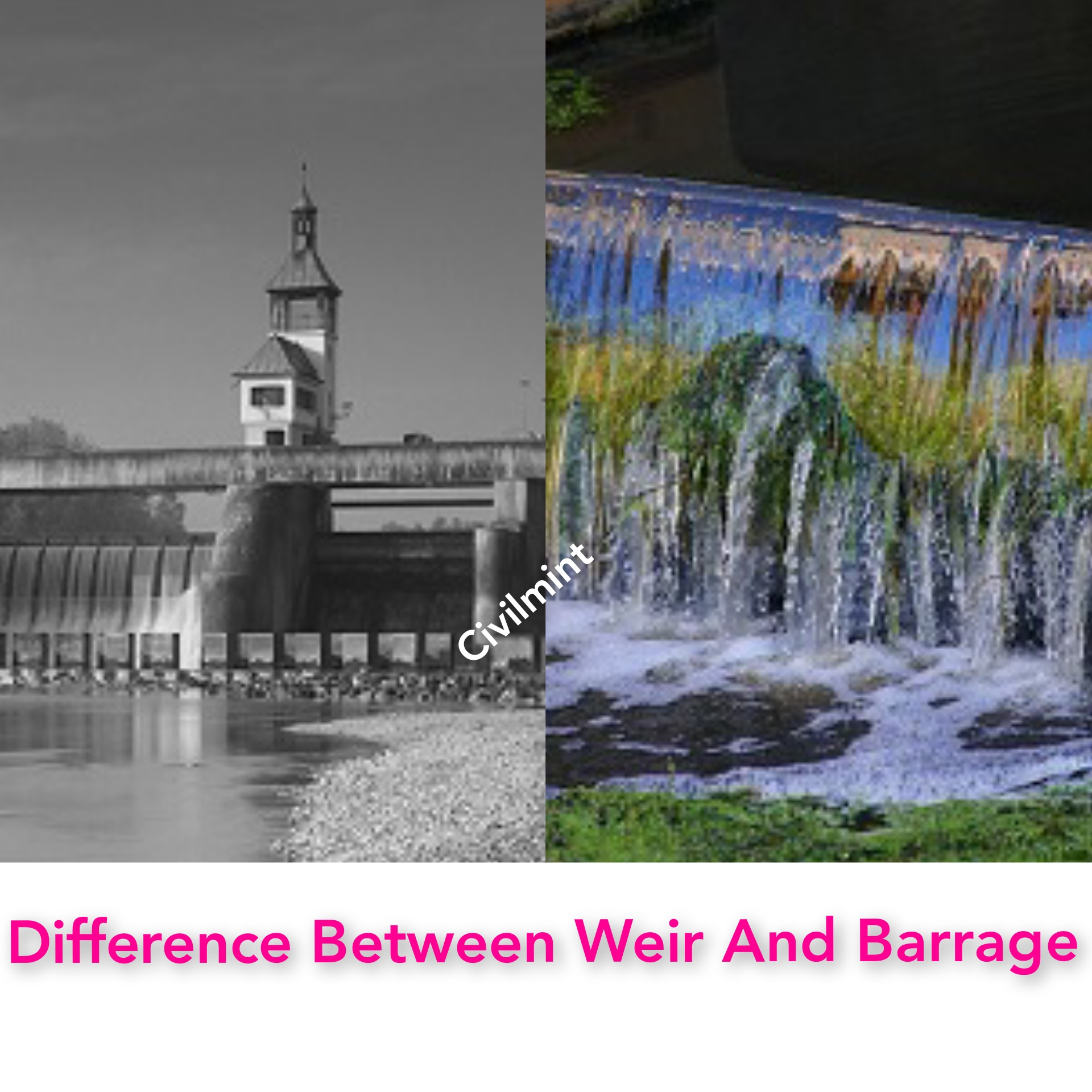In this article, you will learn about difference between weir and barrage.
Table of Contents
Differences Between Weir & Barrage
| Weir | Barrage |
|---|---|
| A weir is a low-level barrier built across a river or stream to control its flow. | A barrage is a high-level barrier constructed across a river to store water and control its flow. |
| Weirs are typically used for water level control, water diversion, and river navigation. | Barrages are mainly used for water storage, irrigation, and hydropower generation. |
| Weirs are typically shorter in height compared to barrages, usually less than 6 feet. | Barrages are usually higher in height compared to weirs, often ranging from 6 to 60 feet. |
| Weirs are built on a natural riverbed and do not require a foundation. | Barrages require a strong foundation and are usually built on a concrete base. |
| Weirs do not create a significant change in water level, usually less than 1 meter. | Barrages create a significant change in water level, sometimes more than 10 meters. |
| Weirs have a low storage capacity and do not hold water for long periods. | Barrages have a large storage capacity and can hold water for several months or even years. |
| Weirs are often used for recreational purposes like fishing and kayaking. | Barrages are not suitable for recreational activities due to their size and high water level. |
| Weirs are relatively simple and cheap to construct. | Barrages are more complex and expensive to construct due to their size and requirements. |
| Weirs can be made of natural materials like stones, timber, or concrete. | Barrages are usually made of concrete or steel. |
| Weirs are usually constructed perpendicular to the river’s flow direction. | Barrages can be built perpendicular or parallel to the river’s flow direction. |
| Weirs do not have gates or sluice systems to control the water flow. | Barrages have gates and sluice systems to regulate the water flow. |
| Weirs have a low environmental impact and do not significantly alter the river’s natural flow. | Barrages can have a significant environmental impact and alter the river’s natural flow, affecting the ecosystem and aquatic life. |
| Weirs are not suitable for large-scale irrigation or hydropower generation. | Barrages are ideal for large-scale irrigation or hydropower generation. |
| Weirs require less maintenance and can be easily repaired if damaged. | Barrages require regular maintenance and repairs due to their size and complexity. |
| Weirs can be removed or modified more easily than barrages if they are no longer needed. | Barrages are difficult to remove or modify once constructed due to their size and impact on the river. |
| Weirs do not pose a significant flood risk to downstream areas. | Barrages can pose a significant flood risk to downstream areas if not managed properly. |
| Weirs can be easily monitored and managed by local authorities. | Barrages require more sophisticated monitoring and management systems due to their size and complexity. |
| Weirs can be used in conjunction with other river management strategies like bank stabilization and erosion control. | Barrages do not usually work in conjunction with other river management strategies. |
| Weirs can be used to control sedimentation and prevent riverbed erosion. | Barrages do not have the same benefits for controlling sedimentation or preventing riverbed erosion. |
| Weirs are not suitable for deep-water navigation or transport. | Barrages can be used for deep-water navigation or transport. |
| Weir is not expensive compared to the barrage. | It is a highly expensive structure. |
| Weirs are obstacles to the watercourse. | They are also obstacles to the watercourse. |
| A weir is an impermeable boundary that is worked across a stream to raise the water level on the upstream side. Here, the water level is at the required height, and abundant water then can stream over the weir. | Barrage has customizable gates which are installed over a dam to maintain the water surface at various levels and at different times. The water level can be decades or increase by opening the valves or gates. Pillar provides the structural support to these gates at both ends and is also positioned at different levels. They are normally operated by cables from the cabin. |
What Is Weir?
Weir is an impenetrable boundary that is developed over a river or waterway to raise the water level on the upstream side. In this method, the water level is raised up to the needed height and the extra water is permitted to discharge over the weir. Weir is primarily constructed across an immersion river or waterway.

What Is Barrage?

When adjustable gates are installed in a weir to keep up the surface of the water at a diverse level at various times, is known as a barrage.
In this method, the water level is balanced by operating the shutters or gates. The gates are provided at different levels and operated by cables from a cabin. These gates are supported on piers on either side. The pier to pier distance is known as the bay.

